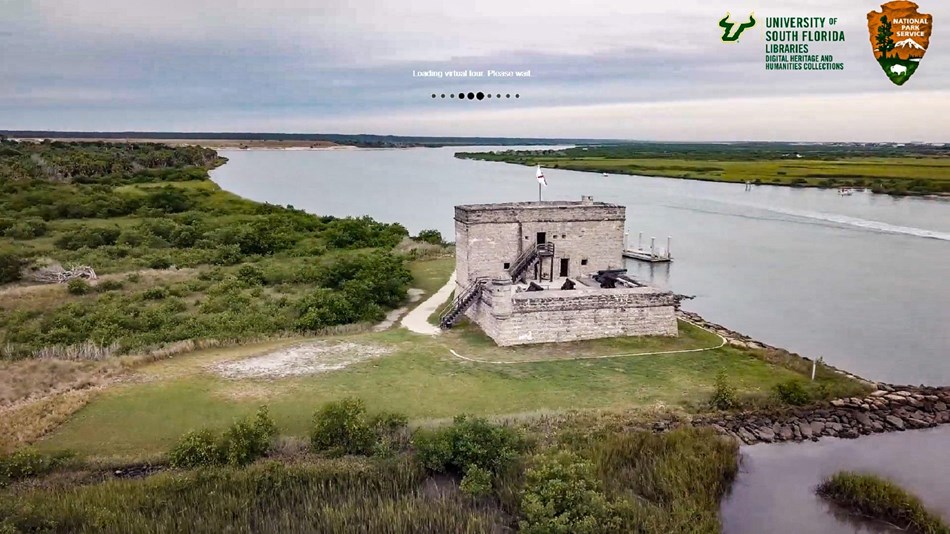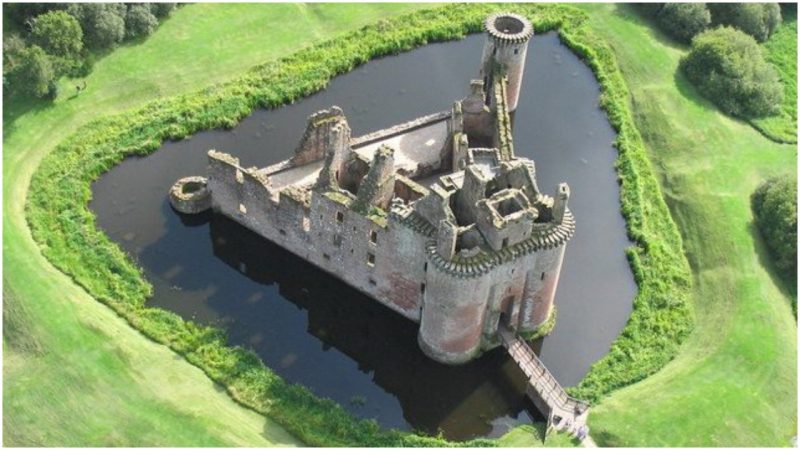St. Augustine, FL
March 31st, 2022
https://www.visitstaugustine.com/thing-to-do/castillo-de-san-marcos
Description
The Castillo de San Marcos is the oldest masonry fort in the continental United States, and is a large Spanish stone fortress built to protect and defend Spain's claims in the New World. It's a National Monument and, at over 315 years old, it's the oldest structure in St. Augustine. Construction began on the Castillo de San Marcos in 1672 and lasted until 1695. The Castillo is made of coquina and was impenetrable to enemy attack while being fire resistant. The fort came under fire for the first time in 1702 and British forces burned the city, but could not penetrate the Castillo's walls. Subsequent attacks in 1728 and 1740 yielded similar results, and the British were never able to take the city of St. Augustine by force. The Castillo was used as a military prison during the Revolutionary War. At the end of the Revolutionary War, Florida was returned to Spain in 1784 until Florida became a United States Territory in 1821. The Americans called the Castillo Fort Marion, honoring the revolutionary patriot from the Carolinas, General Frances Marion. Congress renamed the fort in 1942, reverting to the Spanish name, the Castillo de San Marcos. At over 315 years old, the fort is a lasting landmark of seventeenth-century St. Augustine.
Exterior Photo #1
Exterior Photo #2
Many places in St. Augustine are made of coquina, from the Oldest House to the Castillo de San Marcos fort. Tiny coquina clam donax variabilis live in the shallow waters of coastal Florida. As the resident clam dies, the shells accumulated in layers and thousands of years later they form submerged deposits several feet thick. During the last ice age, sea levels dropped, exposing these shell layers to air and rain. Eventually, the shell became covered with soil, then trees and other vegetation. Rain water percolating through the dead vegetation and soil picked up carbon dioxide and became carbonic acid. As this weak acid soaked downward, it dissolved some of the calcium in the shells, producing calcium carbonate, which solidified in lower layers, much like how flowstone and stalactites are formed in caves. This material "glued" the shell fragments together into a porous type of limestone known as coquina (Spanish for tiny shell). The Castillo de San Marcos fort needed something more than a wooden fort was needed to protect St. Augustine and to keep the British from taking over Florida. Since no one had ever built a fort or any large building out of coquina, they had no idea how strong it would be. At least it would not burn, and the termites wouldn’t eat it. They built the walls an average of 12 feet thick. The first phase of construction was completed in 1695. At the time, the Castillo looked very different than it does now (roughly five feet shorter than they are today, and the rooms were half their current size).
Artifact #2
This here is a bastion. A bastion is a structure projecting outward from the curtain wall of a fortification, most commonly angular in shape and positioned at the corners of the fort. This masonry projects from a larger defense work using an angled plan. The bastion usually serves as a gun platform, houses gunpowder or other defensive material, and aids in making blindspots noticeable.
In Conversation Image #1
https://www.thevintagenews.com/2018/01/16/medieval-castles/?safari=1
The Castillo de San Marcos National Monument had a 60+ year attempt of a moat, but ditched due to the destruction of the coquina it was made of. a moat is a depression surrounding a castle, city wall, or other fortification, usually filled with water. as it prevented moving towers or battering rams from being brought up to the ramparts until the moat had been filled. They served as an obstacle against infantry attacks.
In Conversation Image #2
 https://www.nps.gov/foma/index.htm
https://www.nps.gov/foma/index.htm
Another national monument fort is the Fort Matanzas National Monument, which preserves the fortified coquina watchtower (completed in 1742) and defended the southern approach to the Spanish military settlement of St. Augustine. It also protects approximately 300 acres of Florida coastal environment containing dunes, marsh, maritime forest, and associated flora and fauna, including threatened and endangered species.
Passage/ Concept from ENG202
Craig Santos Perez's "Thirteen Ways of Looking at a Glacier" expresses the effects climate change. He says "The sea is rising/ The glacier must be retreating/ It was summer all winter/ It was melting/ and it was going to melt. The last glacier fits/ in our warm hands" as the last stanzas of the poem. Perez is rightfully blaming global warming on us humans, and is addressing a sense of action urgency we need in order to stop the effects of global warming before its irreversible. Glaciers aren't the only thing affected by global warming. Our entire earth is getting the brunt of our habits leading to climate change and global warming. The Castillo de San Marcos National Monument is affected by Florida already being at sea level. The effects of climate change are intensified. The rising sea level will greatly affect the efforts of preserving the fort. To combat the flooding caused by rising sea level, wind, and high tides, the park is hosting the Seawall Improvement Project. This is a big project that will have many parts and will take several years to complete, but when finished it will protect park resources. The Climate Friendly Parks (CFP) Program has initiatives supporting the National Park Service Green Parks Plan. The CFP program provides national parks with support to address climate change. The goals of the CFP Program include measuring park-based greenhouse gas emissions, educating people about climate change and demonstrate ways individuals and groups can take action to address the issue, and developing strategies and specific actions to address sustainability challenges, reduce greenhouse gas emissions, and anticipate the impacts of climate change on park resources.
Creative Component
For my creative component, I decided to draw a birds-eye view of the fort and continuously outlining it. I like doing these types of drawings where I constantly outline the subject because it gives an illusion affect and adds depth. Also doing this helps add emphasis on the subject, and draws more attention to what is the focus of the drawing. To make a drawing like this, I just searched a birds-eye view of the fort on Google Images, then sketched out the fort along with the ledge to the left of it that leads to the water. I then continuously draw lines that are in line with the ones before it, giving the same repeated outline shape throughout the entire 8.5x11 inch piece of paper. I used a grey colored pencil to make this drawing because the Castillo de San Marcos National Monument is made of coquina that appears a stone color (grey).

 https://www.nps.gov/foma/index.htm
https://www.nps.gov/foma/index.htm







